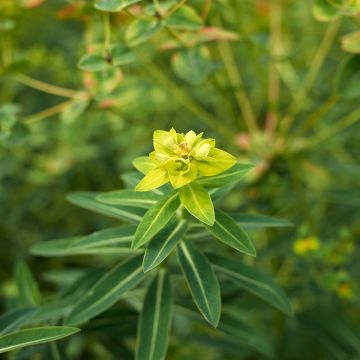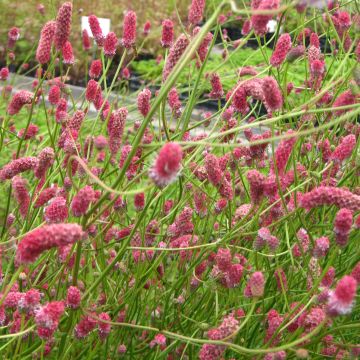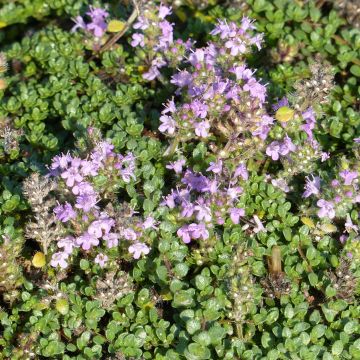

Euphorbia lathyris - Spurge
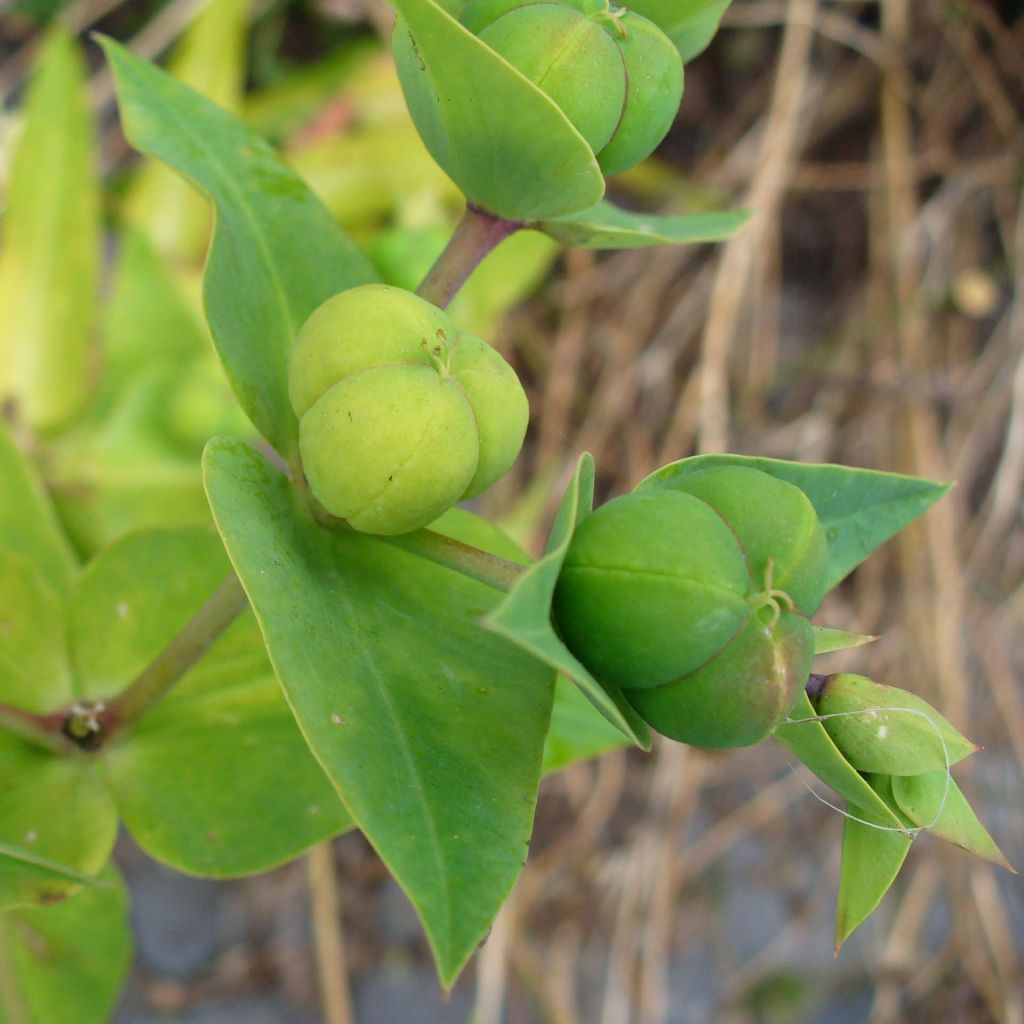

Euphorbia lathyris - Spurge
Euphorbia lathyris - Spurge
Euphorbia lathyris
Caper Spurge, Mole Spurge
Have taken off well, truly graphic and original, I'm now looking forward to them growing fuller.
Anne, 28/04/2023
Special offer!
Receive a €20 voucher for any order over €90 (excluding delivery costs, credit notes, and plastic-free options)!
1- Add your favorite plants to your cart.
2- Once you have reached €90, confirm your order (you can even choose the delivery date!).
3- As soon as your order is shipped, you will receive an email containing your voucher code, valid for 3 months (90 days).
Your voucher is unique and can only be used once, for any order with a minimum value of €20, excluding delivery costs.
Can be combined with other current offers, non-divisible and non-refundable.
Home or relay delivery (depending on size and destination)
Schedule delivery date,
and select date in basket
This plant carries a 12 months recovery warranty
More information
We guarantee the quality of our plants for a full growing cycle, and will replace at our expense any plant that fails to recover under normal climatic and planting conditions.
Would this plant suit my garden?
Set up your Plantfit profile →
Description
The Euphorbia Lathyris, also known as Garden Spurge or Caper Spurge, is also called "mole chaser" or "mole herb". In gardening folklore, it was reputed to repel these small mammals: it is more likely that it is the irritating latex that flows from broken stems that is placed in their burrows that repels them. This plant, most often biennial or short-lived perennial, forms a single upright stem, adorned with long green-blue leaves with a white median and arranged in a cross and horizontally around this stem. Its summer flowering consists of large acidulous umbels that are refreshing. Formerly very common in gardens, it has been ousted as a weed. It is true that it is very undemanding, very hardy and resistant to drought. It also has an unusual pattern, to be highlighted in a rocky or contemporary garden: install it in groups of 5 to 7 plants for a stunning geometric effect!
The Euphorbia lathyris belongs to the Euphorbiaceae family. It is native to southern Europe (France, Italy, Greece) and China, and naturalised in many countries. It is found in fallow land, embankments and rubble, not far from homes, but also in gardens. This species develops over one or two years, flowers only once, then dies.
This herbaceous plant develops a stiff, hollow and solid stem, branching in its upper part when mature. It reaches an average height of 90 cm (35in). This stem bears glabrous, narrow and linear evergreen leaves, pointed at their tips, with a glaucous colour and crossed by an almost white central line. They are arranged opposite each other on the stem, and each pair of leaves forms a right angle with the pair just below and just above it. Seen from above, these leaves form overlapping crosses. The flowering, quite spectacular, takes place in summer, in July-August, it is announced when the stem branches in its upper part. The branches produce a large spherical umbel that bears numerous petal-less flowers, but adorned with beautiful bright yellow-green bracts and carried by bluish peduncles. After pollination by insects, the flowers give way to fruits that explosively release the seeds, emitting a characteristic sound. The root system of this plant consists of a main taproot and a few secondary roots.
Like all euphorbias, this plant contains a sticky and toxic latex when broken. It can cause skin irritations and is toxic if ingested (all parts of the plant are involved).
The Euphorbia lathyris is perfect for wild, contemporary, natural, or rocky gardens. Its uniqueness blends well with yellow, orange, or red kniphofias, phormiums, the blue flowering of forget-me-nots, the large leaves of tetrapanax, orange Hedychium assam, and yuccas. Planted in groups of several plants, it displays a sufficiently graphic silhouette to take pride of place in a rockery or at the bend of a path. Equally at home in modern gardens as in a rustic setting, it pairs well with anything, enhancing its acidic inflorescences with any color. To make its flowering even brighter, simply pair it with the purple of irises, Alliums, or large-flowered clematis. The duo with grasses is particularly successful. It can be used to create soft and sinuous mass effects, structure flower beds, contrast leaf colors and shapes.
Report an error about the product description
Euphorbia lathyris - Spurge in pictures
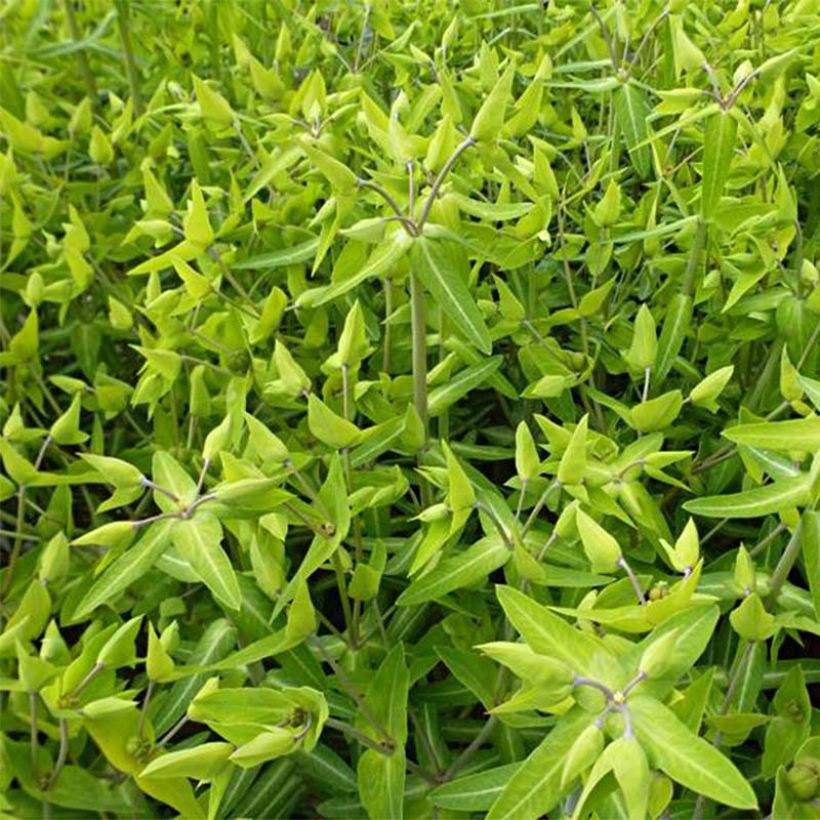

Flowering
Foliage
Plant habit
Safety measures
Botanical data
Euphorbia
lathyris
Euphorbiaceae
Caper Spurge, Mole Spurge
Mediterranean
atteintescutaneomuqueuses
Cette plante peut provoquer l'apparition de réactions cutanées indésirables, une atteinte des yeux, ou des difficultés respiratoires si elle est ingérée.
Ne la plantez pas là où de jeunes enfants peuvent évoluer. Evitez tout contact avec la peau: privilégiez l'emploi de gants pour la manipuler. En cas de contact, lavez-vous soigneusement les mains et rincez abondamment à l'eau la zone concernée. Lavez les vêtements entrés en contact. En cas de réaction cutanée, contactez votre médecin ou le centre antipoison le plus proche de chez vous. En cas d'atteinte étendue ou de difficultés respiratoires, appelez immédiatement le 15 ou le 112.Pensez à conserver l'étiquette de la plante, à la photographier ou à noter son nom, afin de faciliter le travail des professionnels de santé.
Davantage d'informations sur https://plantes-risque.info
Other Euphorbia - Spurge
View all →Planting and care
Planting period
Intended location
Care
-
, onOrder confirmed
Reply from on Promesse de fleurs
Similar products
Haven't found what you were looking for?
Hardiness is the lowest winter temperature a plant can endure without suffering serious damage or even dying. However, hardiness is affected by location (a sheltered area, such as a patio), protection (winter cover) and soil type (hardiness is improved by well-drained soil).

Photo Sharing Terms & Conditions
In order to encourage gardeners to interact and share their experiences, Promesse de fleurs offers various media enabling content to be uploaded onto its Site - in particular via the ‘Photo sharing’ module.
The User agrees to refrain from:
- Posting any content that is illegal, prejudicial, insulting, racist, inciteful to hatred, revisionist, contrary to public decency, that infringes on privacy or on the privacy rights of third parties, in particular the publicity rights of persons and goods, intellectual property rights, or the right to privacy.
- Submitting content on behalf of a third party;
- Impersonate the identity of a third party and/or publish any personal information about a third party;
In general, the User undertakes to refrain from any unethical behaviour.
All Content (in particular text, comments, files, images, photos, videos, creative works, etc.), which may be subject to property or intellectual property rights, image or other private rights, shall remain the property of the User, subject to the limited rights granted by the terms of the licence granted by Promesse de fleurs as stated below. Users are at liberty to publish or not to publish such Content on the Site, notably via the ‘Photo Sharing’ facility, and accept that this Content shall be made public and freely accessible, notably on the Internet.
Users further acknowledge, undertake to have ,and guarantee that they hold all necessary rights and permissions to publish such material on the Site, in particular with regard to the legislation in force pertaining to any privacy, property, intellectual property, image, or contractual rights, or rights of any other nature. By publishing such Content on the Site, Users acknowledge accepting full liability as publishers of the Content within the meaning of the law, and grant Promesse de fleurs, free of charge, an inclusive, worldwide licence for the said Content for the entire duration of its publication, including all reproduction, representation, up/downloading, displaying, performing, transmission, and storage rights.
Users also grant permission for their name to be linked to the Content and accept that this link may not always be made available.
By engaging in posting material, Users consent to their Content becoming automatically accessible on the Internet, in particular on other sites and/or blogs and/or web pages of the Promesse de fleurs site, including in particular social pages and the Promesse de fleurs catalogue.
Users may secure the removal of entrusted content free of charge by issuing a simple request via our contact form.
The flowering period indicated on our website applies to countries and regions located in USDA zone 8 (France, the United Kingdom, Ireland, the Netherlands, etc.)
It will vary according to where you live:
- In zones 9 to 10 (Italy, Spain, Greece, etc.), flowering will occur about 2 to 4 weeks earlier.
- In zones 6 to 7 (Germany, Poland, Slovenia, and lower mountainous regions), flowering will be delayed by 2 to 3 weeks.
- In zone 5 (Central Europe, Scandinavia), blooming will be delayed by 3 to 5 weeks.
In temperate climates, pruning of spring-flowering shrubs (forsythia, spireas, etc.) should be done just after flowering.
Pruning of summer-flowering shrubs (Indian Lilac, Perovskia, etc.) can be done in winter or spring.
In cold regions as well as with frost-sensitive plants, avoid pruning too early when severe frosts may still occur.
The planting period indicated on our website applies to countries and regions located in USDA zone 8 (France, United Kingdom, Ireland, Netherlands).
It will vary according to where you live:
- In Mediterranean zones (Marseille, Madrid, Milan, etc.), autumn and winter are the best planting periods.
- In continental zones (Strasbourg, Munich, Vienna, etc.), delay planting by 2 to 3 weeks in spring and bring it forward by 2 to 4 weeks in autumn.
- In mountainous regions (the Alps, Pyrenees, Carpathians, etc.), it is best to plant in late spring (May-June) or late summer (August-September).
The harvesting period indicated on our website applies to countries and regions in USDA zone 8 (France, England, Ireland, the Netherlands).
In colder areas (Scandinavia, Poland, Austria...) fruit and vegetable harvests are likely to be delayed by 3-4 weeks.
In warmer areas (Italy, Spain, Greece, etc.), harvesting will probably take place earlier, depending on weather conditions.
The sowing periods indicated on our website apply to countries and regions within USDA Zone 8 (France, UK, Ireland, Netherlands).
In colder areas (Scandinavia, Poland, Austria...), delay any outdoor sowing by 3-4 weeks, or sow under glass.
In warmer climes (Italy, Spain, Greece, etc.), bring outdoor sowing forward by a few weeks.

































